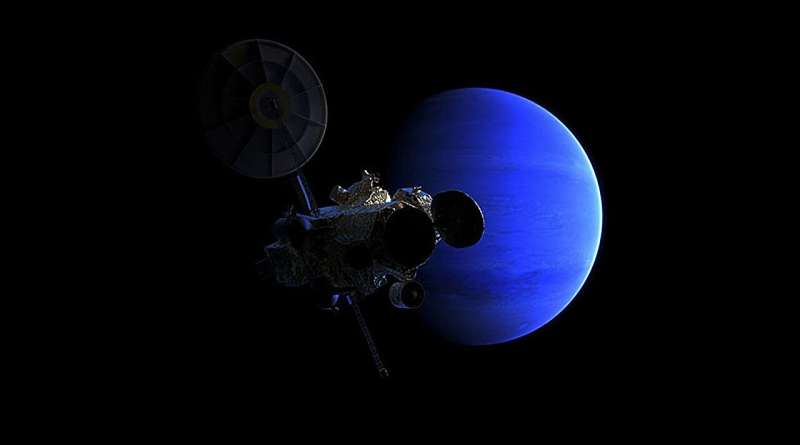
September 17, 2024 by Andy Tomaswick, Universe Today
Collected at: https://phys.org/news/2024-09-ambitious-mission-neptune-planet-triton.html
Mission concepts to the outer solar system are relatively common, as planetary scientists are increasingly frustrated by our lack of knowledge of the farthest planets. Neptune, the farthest known planet, was last visited by Voyager 2 in the 1980s.
Technologies have advanced a lot since that probe was launched in 1977. But to utilize that better technology, we first need to have a mission arrive in the system—and one such mission is being developed over a series of papers by ConEx Research and University College London. One has been published in The Aeronautical Journal by J. E. McKevitt and colleagues.
The Arcanum mission is designed to orbit Neptune and land on Triton, giving insight into both objects of interest in the system. Neptune has some of the highest winds in the solar system and the “Great Dark Spot” storm system. Triton is even more interesting, with potential active volcanism and possibly a subsurface ocean.
Given the different requirements to study both the planet and moon, Arcanum is split into three distinct parts—an orbiter, an “orbital maneuverer,” and a lander. Let’s take a look at each one in turn.
Somerville is the orbiter’s name, and its primary function is to provide a scientific platform from which to study Neptune. But it will also serve as a communications relay for the lander system, which it will be joined to for most of its voyage to the outer solar system.

The payload includes several cameras, a few spectrometers, a magnetometer, and some other scientific equipment, but most importantly, it will contain a telescope. The telescope will operate in the visible and infrared spectrum, allowing the orbiter to both look at the Neptunian system and search for objects farther afield, such as those in the Kuiper Belt.
The system that enables the orbital maneuvering of the lander is known as Tenzing. It will operate in two stages—first after it separates from Somerville and second after the lander disconnects. During its first phase, its purpose is to position the lander accurately for a touchdown on Triton, using its fuel reserves and providing a power top-up to the lander itself.
During its second phase, it acts as an orbiting observer and relay station, interfacing communications from the lander to Somerville, which has a much stronger antenna.
Tenzing also has a series of three “penetrators” that will attempt to break through the outer ice shell on Triton, allowing for scientific study of the world’s interior. It’s unclear whether the system designers plan to penetrate the crust entirely to get to a potential undersea ocean,
The lander itself is called Bingham and consists of its own engines, landing pads, and scientific suite. Instruments on board include multiple cameras, a seismometer, a thermometer, and a mass spectrometer. Overall, the instrumentation on the lander would provide a basic understanding of the surface conditions on Triton, though it wouldn’t necessarily be able to dig into the most interesting parts of the moon on its own.
All these systems wouldn’t be possible without Starship’s improved launch capability, which is expected to have at least an order of magnitude more carrying capacity to a transfer orbit than many existing commercial rocket solutions. Bingham and Tenzing alone have a “wet” mass (i.e., with propellant) of 550 kg, putting it in a much heavier category than other outer solar system missions.
With an expected launch date of 2030 and an expected arrival at Neptune in 2045, there will be plenty of time for Starship to get put through its paces before the launch window. But as of now, Arcanum is only one of several proposed solar system missions and has no major space agency backing.
It remains to be seen what our next mission to Neptune will look like. However, the pressure to send one will increasingly build until, eventually, one day, humanity returns to this exciting system.
More information: J. E. McKevitt et al, Concept of operations for the Neptune system mission Arcanum, The Aeronautical Journal (2024). DOI: 10.1017/aer.2023.114

Leave a Reply